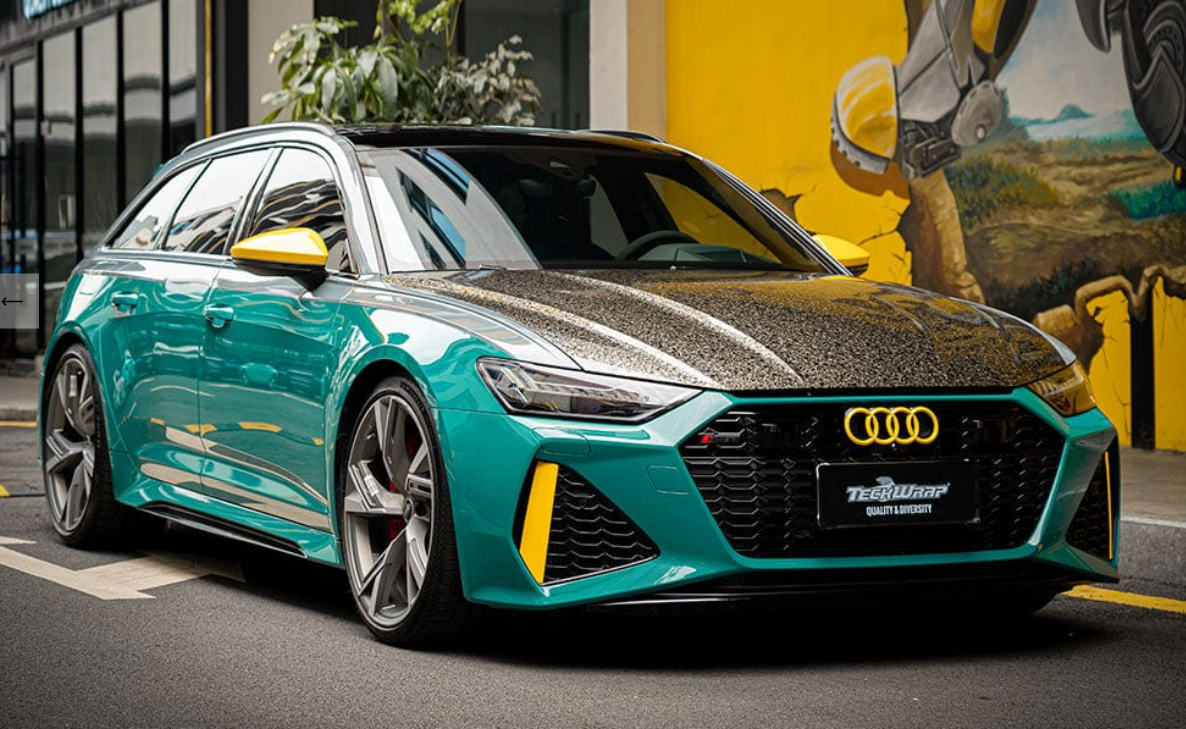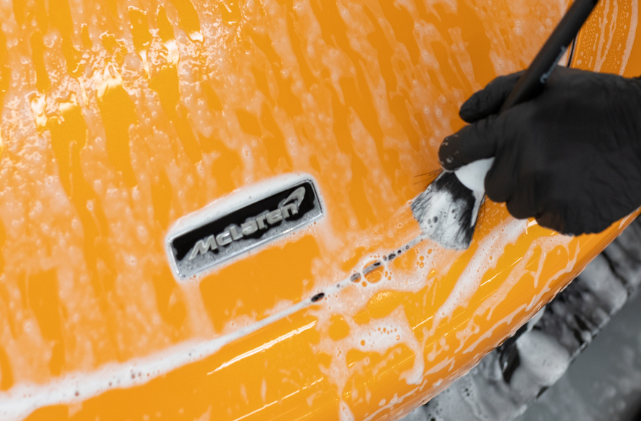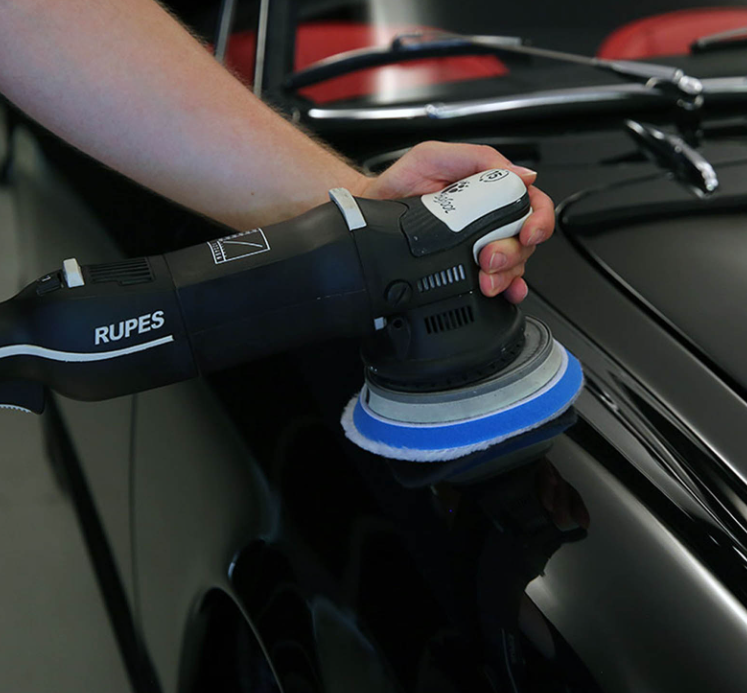Wrapping e Detailing
Car wrapping is a vehicle customization technique that involves applying a vinyl adhesive film to the body of a car, motorcycle, boat, or other modes of transportation. This film can come in various colors, finishes (matte, glossy, satin, metallic, etc.), and even textures (carbon fiber, leather, etc.), allowing for a complete transformation of the vehicle’s exterior without resorting to traditional painting.
- Full wrap: covers the entire surface of the vehicle, including doors, hood, roof, and trunk.
- Partial wrap: focuses on specific areas such as the hood, roof, or sides.
- Color change wrap: changes the overall color of the car.
- Wrap graphics: includes designs, logos, or custom graphics for artistic or branding purposes.
- Customization: easily change the appearance of your car with a wide variety of colors, finishes (matte, glossy, satin, metallic), and designs.
- Protective layer: protects the original paint from road debris, UV rays, and weather elements.
- Reversibility: unlike paint, films can be removed without damaging the underlying surface.
- Cost-effective: usually more affordable than a complete professional paint job.
- Marketing tool: it is common practice for businesses to wrap vehicles with their logos or promotional material for mobile advertising.
Interior Detailing
Interior detailing involves the cleaning and care of the vehicle’s cabin or the interior spaces of a boat. The main steps include:
- Deep cleaning of all internal surfaces (dashboard, seats, mats, etc.) using a vacuum and specific cleaners.
- Sanitization of the cabin, especially in cases of bad odors or bacteria.
- Cleaning of leather or fabric seats, removing stains and treating leather with nourishing products to prevent cracking.
- Cleaning of internal windows and mirrors for perfect visibility.
- Cleaning of air vents and electronic components.
- Protection of surfaces with the application of waxes or sealants to prevent dust and dirt from accumulating quickly.
Exterior Detailing
Thorough washing of the body using safe techniques to avoid scratches (e.g., the two-bucket wash method).
- Decontamination of the paint with specific clay to remove contaminants such as resin, industrial dust, or tar.
- Cleaning and protection of wheels and tires.
- Treatment of external plastics to restore their original color and protect them from weather elements.
- Treatment of external windows to improve visibility and safety while driving.
Polishing
Polishing is a delicate phase that can be applied to cars, motorcycles, or boats to remove imperfections and restore the original shine of the paint. There are different levels of polishing depending on the condition of the vehicle:
- Correction polishing: to remove superficial scratches, oxidation marks, and other visible imperfections on the paint.
- Finishing polishing: to give the surface a deep and even shine.
- Sealing and protection: after polishing, it is important to apply a sealant or wax to protect the paint from weather elements, dirt, and contaminants.



